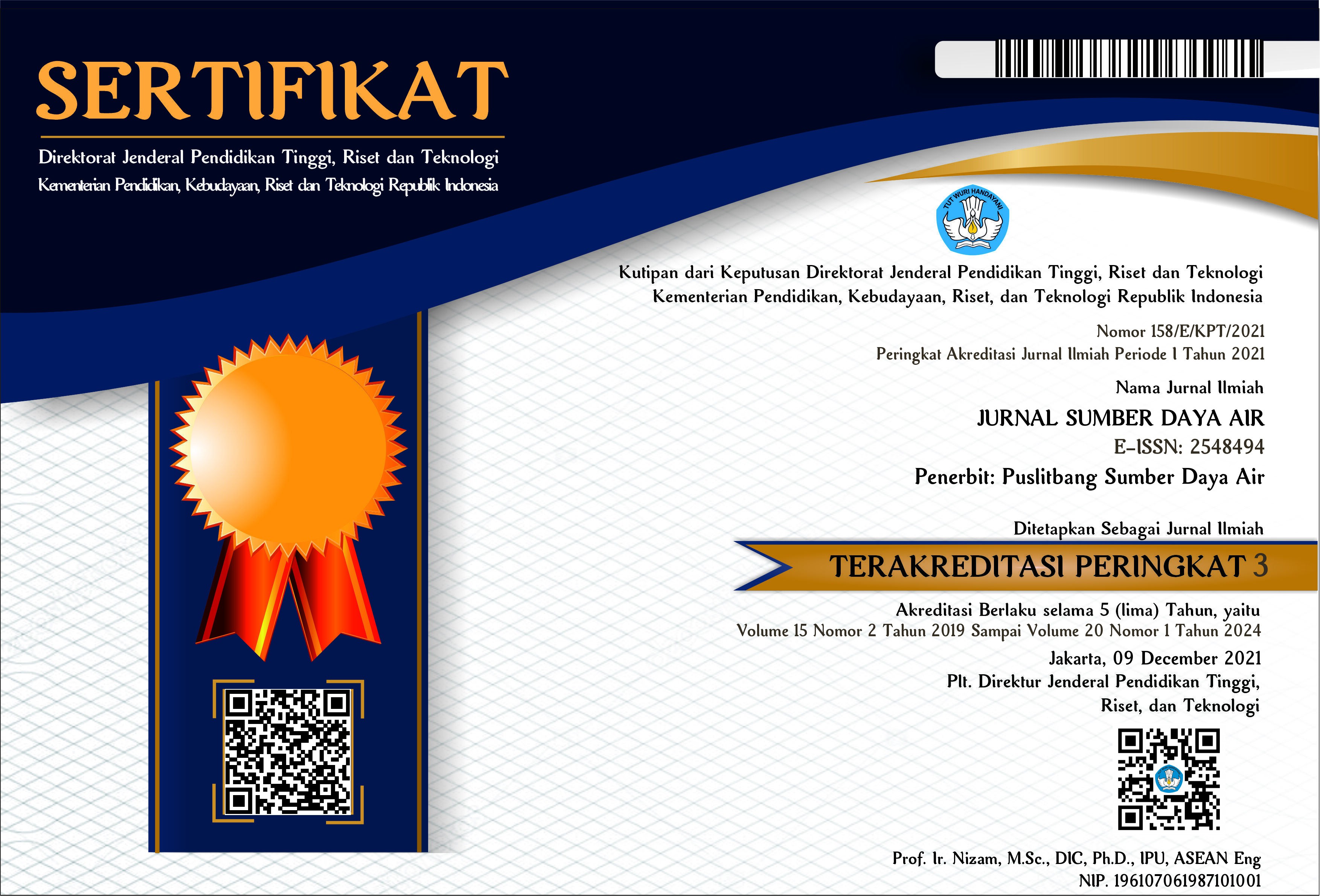PREDIKSI TINGKAT KEKERUHAN (TURBIDITAS) MENGGUNAKAN CITRA SATELIT SENTINEL-2A DI WADUK JATILUHUR, JAWA BARAT
DOI:
https://doi.org/10.32679/jsda.v17i2.697Abstrak
Turbidity is one of the remote sensing indicators on the reservoir physical characteristics that can reduce its brightness level. Measuring reservoir physical characteristics traditionally are expensive and time consuming as well. Therefore, remote sensing is used as an alternative for turbidity measurement because it can provide data and products spatially, temporally as well as synoptically with low cost. This study aims to obtain an algorithm using a combination of in-situ turbidity data measurement and Sentinel-2A satellite imagery data. The resulting algorithm can be used to predict and map turbidity in Jatiluhur Reservoir. Based on the multiregression between B3 (green band) and B4 (red band) with in-situ turbidity data measurement, it is obtainted that the regression coefficients are a = 76.77, b = 63.22 and c = -34.31 respectively, with the equation of Y = 76, 77+63.22 X1-34.31X2 (Y=predicted turbidity, X1=lnB3, X2=lnB4). The correlation value between in situ and turbidity prediction is quite strong with a coefficient of determination (R2) of 0.60, and Root Mean Square Error (RMSE) of 1.95 NTU. Based on Mean Absolute Percentage Error (MAPE) analysis, the deviation is 31.1%. High levels of turbidity can reduce the main productivity of water and its organisms, especially in respiratory and visual problems. Sedimentation caused by high turbidity levels can make siltation which results in reservoir capacity loss.
Keywords: Turbidity, remote sensing, Sentinel-2A satellite imagery data, Jatiluhur Reservoir, siltationUnduhan
File Tambahan
Diterbitkan
Cara Mengutip
Terbitan
Bagian
Lisensi
The Authors submitting a manuscript do so on the understanding that if accepted for publication, copyright of the article shall be assigned to Jurnal Sumber Daya Air and Pusat Penelitian dan Pengembangan Sumber Daya Air as publisher of the journal.Copyright encompasses exclusive rights to reproduce and deliver the article in all form and media, including reprints, photographs, microfilms and any other similar reproductions, as well as translations. The reproduction of any part of this journal, its storage in databases and its transmission by any form or media, such as electronic, electrostatic and mechanical copies, photocopies, recordings, magnetic media, etc. , will be allowed only with a written permission from Jurnal Sumber Daya Air and Pusat Penelitian dan Pengembangan Sumber Daya Air.
Jurnal Sumber Daya Air and Pusat Penelitian dan Pengembangan Sumber Daya Air, the Editors and the Advisory International Editorial Board make every effort to ensure that no wrong or misleading data, opinions or statements be published in the journal.




















